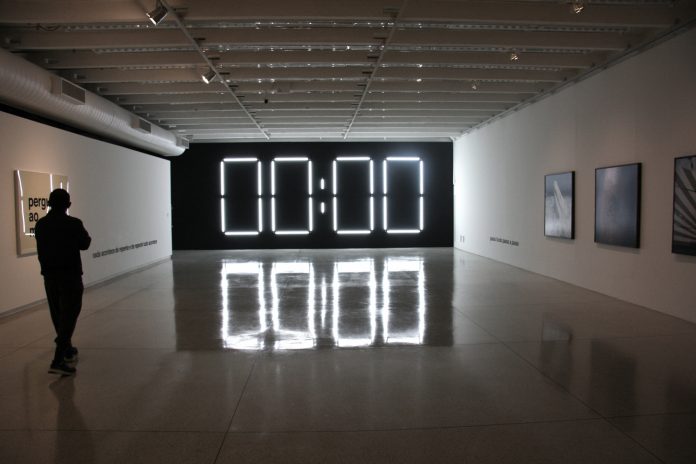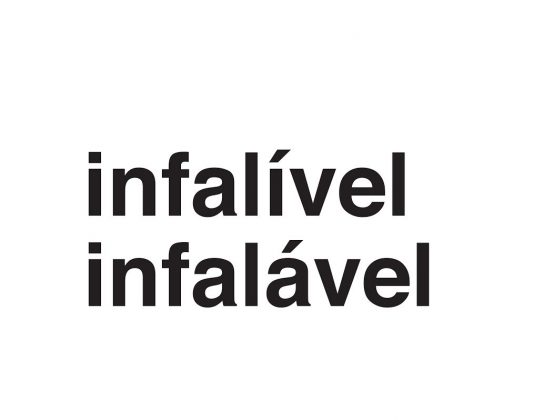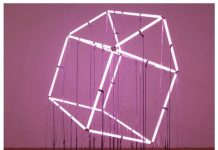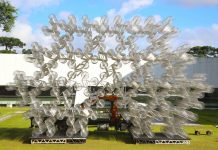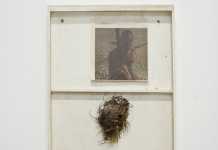What provokes an artist to give a formal twist to his work? How to react to the vertigo caused by the sensation of fragmentation and the change of scenery? Juliana Stein arrives in São Paulo with a transformation in her work, putting into question the representation of the territories of art, spaces and subjects. Sample It's not clear till night falls, on display at SIM Galeria, it brings together a set of short texts printed on acrylic plates, which Juliana calls autobiographical. “Everything happens as if my power of access to the world and that of entrenching myself in ghosts did not exist without each other. So, it is precisely when I try to get closer that I create a distance.”
Juliana's questions were already present in previous speeches, such as imagination, indignation and present tense. The idea of now is already contained in the title, It's Not Clear Until Night Falls. It refers to a unique and particular moment that no longer exists and that is marked in the time that no longer exists. Juliana abandons the explicit subject of her previous phases, with scenes of bathers on a beach or fragments of erasures of dense landscapes, to work with fictions of the enigmatic, playful, mysterious subject. For her, It's Not Clear Until Night Falls it is an attempt to articulate photography spaces around the opaque meaning of things that escape, and that inscribe us more than we can write about them.
Anyway, she agrees that change is an unstable situation, critical of false certainties. “I didn't even feel that I had changed because everything was already contained in my work, space, text. My work is autobiographical, with a break between things.”
For five years Juliana taught the blind and came to understand the role of memory as forgetting, not remembering. “The function of memory is to allow forgetting”. For her, there is a difficulty in listening, speaking: does it belong to me or does it belong to the observer? A reflection continues to inhabit this photographer trained in psychology, who questions herself in the face of the fact that the message is not always understood. “I may know what he said, but not what the other heard. There is an elusive place for knowledge and this place defines what knowledge is.”
Juliana sees the image as a record of something, but of what? She often collects phrases or excerpts from books that interest her and even sticks them in visible places, as well as keeping a blackboard on which she scribbles thoughts when she has a insight.
She is part of a group of photographers who do not want to remain, formally, in a single language. With this exhibition, she breaks the boundaries of her territory, and as defined by Phillippe Dubois, this is the most passionate part of the History of Photography. For the curator of the show, Agnaldo Farias, this new phase “demonstrates a broad understanding of photography, since phrases, words or drawings are, directly or indirectly, related to photography and the act of seeing”.
The critic has followed Juliana's work for almost two decades and, when he was curator of the 29th Bienal de São Paulo, in 2010, he chose her work Yes and no, a collection of portraits of men dressed as women, to be featured in the show. The series Cave, with images of traces of the occupation of cells in prisons, participated in Atlas of the Empire, at the 55th Venice Biennale, in 2013, in the Pavilion of the Italian-Latin American Institute. Juliana is from Rio Grande do Sul and has been working with photography since the late 1990s in Curitiba. She became known for her social aspects of Brazilian reality.
It's Not Clear Until Night Falls
SIM Gallery – Rua Sarandi, 113 A, São Paulo
Until March 23, 2019

